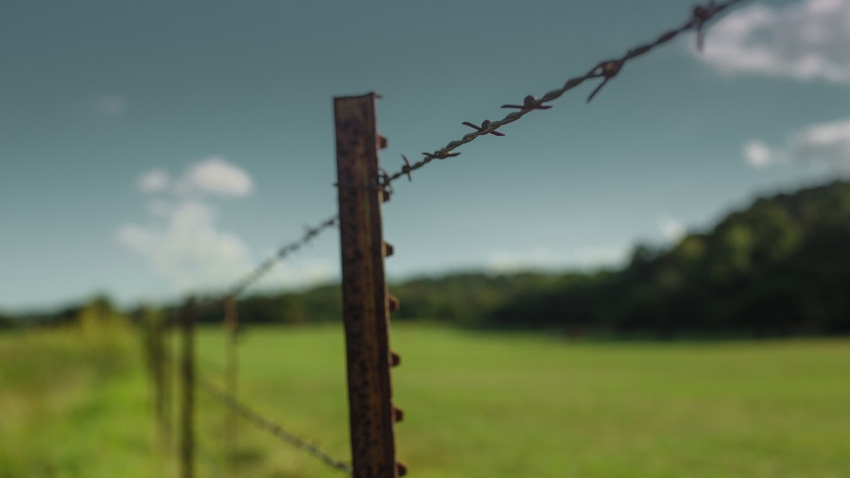May 19, 2023

One common question I still get from readers, cattle producers and new purchasers of farmland is whether landowners on both sides of the fence must contribute to building or repairing a fence in Iowa.
The answer is clear: In Iowa, fencing responsibilities must be shared if requested by an adjoining landowner unless there is a written agreement stating otherwise. Farm families in Iowa have long understood this requirement, but it may not be as familiar to non-farmers or out-of-state landowners.
Because farmland is changing hands at an accelerated rate in Iowa as baby boomers age, die or retire, many newer owners of farmland may be unaware of the history of our fencing rules, or may not understand why they need to contribute to a fence when they don’t own or pasture livestock.
Bills have been introduced over the years to change the law. For instance, some bills would require the landowner who pastures livestock on an adjoining tract of land to bear the sole responsibility for the building or maintenance of a partition fence upon written demand of the adjacent landowner. These bills have failed to gain traction.
In fact, the Iowa Supreme Court in 1995 held that Iowa’s fencing statute was not unconstitutional as applied to landowners who did not own animals but were required to pay for part of the maintenance of a fence adjoining land where livestock were kept. The court found that the statute applied equally to all adjoining landowners and was not “unduly oppressive.”
In the case, the adjoining urban landowners who did not keep livestock argued that the law requires them to “expend substantial sums of money to maintain and repair a fence from which they derive no benefit.” The court disagreed and held that “a law does not become unconstitutional because it works a hardship.”
Iowa’s law
Each state generally has its own set of laws relating to fence maintenance and building. Iowa Code Chapter 359A governs partition fencing in this state. A partition fence is a fence built on the property line between adjacent tracts of land. The fence law is different from our state’s boundary laws. If landowners are involved in a dispute over the location of a fence or property line, the law of “boundary by acquiescence” applies (Chapter 650).
Our fencing laws state that a landowner can be “compelled” to share in the cost of creating or maintaining a partition fence upon the written request of the adjacent landowner. If the adjacent landowners cannot come to an agreement upon dividing fencing responsibilities, the Iowa Code authorizes township trustees to act as fence viewers and decide partition fence controversies.
The decision of the fence viewers is binding on current and future owners. The fence viewers’ decision may be appealed to the county district court. Chapter 359A also details the requirements for a “legal” fence in Iowa, laying out the materials acceptable for a lawful fence.
Here are more details of fence law to understand:
Written agreements. It is always a good idea to put any agreement into writing. Chapter 359A allows the writing and recording of fence agreements between adjoining landowners. In fact, a written and properly recorded fence agreement “runs with the land,” and protects landowners old and new.
Trespass and liability. Sometimes cattle get out. Routinely checking and maintaining fences along with having property liability insurance are the best ways to protect your farming operation in an accident. The Iowa courts impose a duty on livestock owners to restrain their livestock. If they fail to maintain fences, they could be facing liability issues for damage caused by “trespassing” animals. However, if the livestock owner has followed the proper channels and the fence law, neighboring landowners who do not comply with the rules could also be held liable.
Hometown rules. The Iowa Supreme Court has stated that under the doctrine of “home rule,” a city or county ordinance cannot conflict with a state statute. Thus, a town is free to adopt its own fencing ordinances, as long as they do not conflict with Chapter 359A. For example, some towns have adopted ordinances banning the use of barbed wire.
Neighbors. As always, communication is the key to avoiding fencing disputes, and a good understanding of the law remains the best way to resolve issues quickly and amicably. The law clearly provides that adjacent landowners share the responsibility for the creation and maintenance of fences in Iowa. Chapter 359A will remain the law until it is changed by an act of the state Legislature and signed by the governor. For an in-depth explanation of Iowa’s fencing laws, visit Iowa State University’s Center for Agricultural Law and Taxation.
Trees along fence line
Landowners with trees growing along a fence line have asked me how to maintain the fences and whether they can remove the trees. In Iowa, you may trim overhanging branches up to the fence line. Trees that stand in the “line” of a fence or boundary are usually considered “common property.”
However, you should exercise care when removing trees and branches without the consent of the neighboring landowner, because improper clearing or damage can lead to trespass claims and triple damages for the value of the trees cut. The best thing to do is to reach out to the other landowner before you act.
Read more about:
Fence LawAbout the Author(s)
You May Also Like






